| Spotlight
55 Glorious years of Rajshahi University
A.K. Ratan and M.A. Kaioum
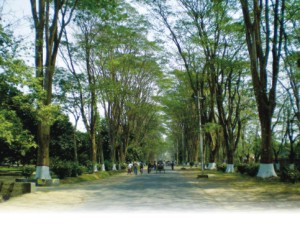 Rajshahi University, one of the largest universities in Bangladesh, has celebrated its 55th anniversary on 7th July, 2008. The university was established in 1953 and since then have turned out to be one of the pioneer institutes for research attaining academic excellence. Rajshahi University, one of the largest universities in Bangladesh, has celebrated its 55th anniversary on 7th July, 2008. The university was established in 1953 and since then have turned out to be one of the pioneer institutes for research attaining academic excellence.
The city of Rajshahi stands on the river Padma and holds the tradition of kings and sultans. It was also the nerve of the famous Varendra region .The region prospered during the time of the Pala Dynasty. A university was established at Sompur Vihara, which was also called “Paharpur” in ancient times in this region in order to spread higher education of different disciplines -- knowledge, philosophy and holiness. It gained so much reputation that learners from home and abroad came to learn there. But in the course of time, that university ceased to exist.
The situation improved a little when the British Govt. undertook a scheme to establish universities in British India connecting important place to higher education and research. Then, the Govt. decided to form a committee headed by Vice Chancellor of Leeds University Prof. M. E. Sadler on July 6,1917. The commission highly recommended establishing a university at Rajshahi as it had been enjoying better status especially in education and culture than any other city in the region.
Rajshahi Zilla School (1836), Rajshahi college (1873), Rajshahi Public Library (1884), the Varendra research society and museum were the pioneer institutions in this city. After scrutinizing all data and information Prof. Sadler strongly recommended to set up a residential university by converting Rajshahi College. But the political situation was the barrier implementing the proposal of Prof. Sadler.
The then Pakistan govt. passed an ordinance to affiliate every college of the eastern part of Pakistan under the Dhaka University. At that time the movement for establishment of Rajshahi University had started.
 After that, Prime Minister Nurul Amin and HealthMinister Habibullah Bahar assured in 1952 when they were on a visit to Rajshahi that a university at Rajshahi would be established in response to the demand of the people there. In the same year, a member of the Legislative assembly Madar Bux, led a delegation of elites, public leaders and students to Mr. Nurul Amin with a demand for establishing a university at Rajshahi and the delegation was successful in convincing him. The minister introduced the bill in legislative Assembly in Nov. 1952, which was the first step to set up a university at Rajshahi and it led to the fomulation of Rajshahi university act,1953 (The East Bengal act XV of 1953 ) on March 31,1953 . The Act was published through Dhaka Gazette (extraordinary ) on June 16,1953.The activities started on the following year while Dr. Prof. Itrat Hossain Zuberi appointed the founder Vice Chancellor of the university . After that, Prime Minister Nurul Amin and HealthMinister Habibullah Bahar assured in 1952 when they were on a visit to Rajshahi that a university at Rajshahi would be established in response to the demand of the people there. In the same year, a member of the Legislative assembly Madar Bux, led a delegation of elites, public leaders and students to Mr. Nurul Amin with a demand for establishing a university at Rajshahi and the delegation was successful in convincing him. The minister introduced the bill in legislative Assembly in Nov. 1952, which was the first step to set up a university at Rajshahi and it led to the fomulation of Rajshahi university act,1953 (The East Bengal act XV of 1953 ) on March 31,1953 . The Act was published through Dhaka Gazette (extraordinary ) on June 16,1953.The activities started on the following year while Dr. Prof. Itrat Hossain Zuberi appointed the founder Vice Chancellor of the university .
At that time, 12-degree colleges and 8 intermediate colleges were affiliated to this university. It started its academic activities with 161 students including five female students. The VC's office was set up on the “Bara kuthi”(silk trading house). Medical centre, classroom, library and some classrooms were housed in the neighbouring B.B. Hindu academy. Most of the classes, however, were held at Rajshahi college buildings. The office of the inspector of colleges was housed in “Matridham”, a building of the Barakuthipara and the office of the controller of examinations in a part of house of Kunja Maitra. The Fuller Hostel of Rajshahi College was used as a hall of the university. Some rented houses were used as residential halls for the students. Some houses were rented also for teachers and employees. In 1961, the acute problem of campus was solved when the campus was transferred to the lush green neighbourhood of Motihar at the own campus of RU. G. Swani Thomas designed the structure of the university while he was helped by John A Zimanek, a famous architect.
Rajshahi University was established as the second university in the country. Now it has 47 departments under eight faculties and 5 institutes for higher education and research. There are 16 residential halls for the students including 5 female halls. About 25000 students are studying here while the number of teachers stand at 1040. The university now has 303.8 hectors of land, five kilometers east of the Rajshahi city centre. There is a campus based museum on Liberation named “Shaheed Smriti Songrohosala“ which stores the history of Bangladesh after 1952. The first museum of Bangladesh, known as Varendra Museum is also affiliated with the University.
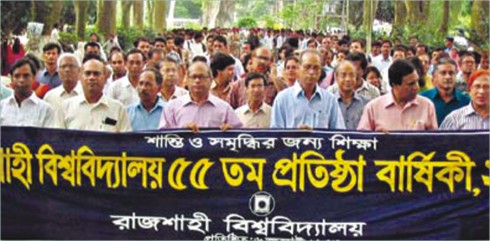
In last 55 years, a large number of students have obtained their graduate and post graduate degrees from Rajshahi University. A good number of scholars gained their M. Phill and PhD degree from here. Many of them have established themselves in different professions. Many former students of the university have brought national glory as well as international reputation showing intellect and wisdom in respective fields.
The students of the university have made major contributions not only in academic activities but also in co-curricular activities. Rajshahi University won the champions trophy in Bangladesh Inter university games for two years consecutively, which is a rare record in the history of inter university games. Both athletics and cultural performance of the students have brought honour to the university.
The teachers and students of Rajshahi university have always been conscious to oppose all forms of discrimination.
In 1962, through the for cancellation of the education commission report, in 1969 Mass uprising for democracy and active participation in the Liberation Warin 1971 the members of this university were always in the forefront of national politics. During the mass movement of 1969, students of the university were very active and Dr. Shamsuzzoha, the then proctor of the university sacrificed his life while protecting students from the Pakistani military. Besides him Prof. Habibur Rahman, Prof. Sukhranjan Somaddar, Mir Abdul Quayum and many other teachers, students and employees sacrificed their lives in the Liberation War of 1971.
The famous litterateur Dr. M. Shahidullah, Dr.M. Enamul Haque, Former chief adviser Justice Habibur Rahman, historian David Calf, anthropologist Pitter Bouchi, Flarence Maleni, Johana Kork Patrick, Prof. Abdul Karim and renowned writers Hasan Azizul Haque and Badruddin Omar were all faculty members of the university.
(The writers are students of Mass Communication and Journalism Department of Rajshahi University)
55th anniversary of RU observed
Mamun Abdul Kaioum
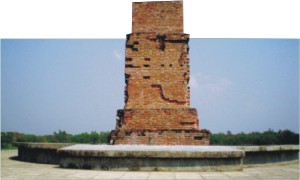 Rajshahi University observed it's 55th anniversary on 6 July, 2008 through various programs. The program started from the Shabash Bangladesh Chattar of Rajshahi University through recitation from the Holy Quran at 10 am. The National flag, University flag, balloons and festoons were hoisted by the Vice Chancellor of Rajshahi University, Professor Mamnunul Keramat. Professor Keramat spoke on the occasion at Shabash Bangladesh Chattar celebrating the 55th anniversary of RU. After his speech, a procession with more than 1000 students, teachers and officials marched round the whole campus. Rajshahi University observed it's 55th anniversary on 6 July, 2008 through various programs. The program started from the Shabash Bangladesh Chattar of Rajshahi University through recitation from the Holy Quran at 10 am. The National flag, University flag, balloons and festoons were hoisted by the Vice Chancellor of Rajshahi University, Professor Mamnunul Keramat. Professor Keramat spoke on the occasion at Shabash Bangladesh Chattar celebrating the 55th anniversary of RU. After his speech, a procession with more than 1000 students, teachers and officials marched round the whole campus.
The VC, in his speech, requested all to help for the welfare of RU.
A tree plantation program was held at RU Teachers Students Cultural Centre (TSCC).
A discussion meeting was held at the Kazi Nazrul Islam auditorium on the 55th anniversary of Rajshahi University.
On the discussion meeting the Vice-Chancellor, Former Vice Chancellors Professor Moslem Huda, Professor Faisul Islam Faruqi, Professor M. Anisur Rahman, Former Pro-VC Shahadat Hossain Mondol , Student Adviser Professor Faridul Islam, Director of TSCC Professor Abdur Rahman Siddiki and Dean of Social Science Professor Sadekul Islam, Hall Provost of Nawab Abdul Latif Hall Prof. Rabiul Islam recalled the RU days .
The speakers urged all to explore the unknown hero of RU. They also requested University Grants Commission to increase facilities at RU campus by increasing the allocated budget for RU.
Group Of Liberal Debaters (GOLD), central debate organization of RU organized a parliamentary format debate at Shahidullah Arts faculty celebrating the occasion. Several cultural and voluntary organization of RU including the Kendrio Shangskritik Jote, Natto Duwar, Swajon, Badhon, Sonon organized several programmes celebrating the same .
3rd year student of Mass Communication and Journalism department .
University of Rajshahi.
Interview of the Vice Chancellor of Rajshahi University
Interview taken by Mamun Abdul Kaioum
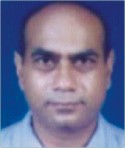 Prof. Mamnunul Keramat joined Rajshahi University as the Vice Chancellor on May 15, 2008. He is the 20th Vice-Chancellor of the University. In this interview he has talked about the 55th anniversary of RU. Prof. Mamnunul Keramat joined Rajshahi University as the Vice Chancellor on May 15, 2008. He is the 20th Vice-Chancellor of the University. In this interview he has talked about the 55th anniversary of RU.
Star Campus (SC): Rajshahi University(RU) is celebrating its 55th anniversary. It has come a long way since its inception. Tell us about your journey in this institution and also your feelings about this glorious moment.
Prof. Keramat (PK): Being the Vice Chancellor of this prominent university is a matter of pleasure to me. I am very glad because I was a student of the university. As a teacher, student and administrator I am very proud to observe it's 55th anniversary. Since 1953, the university is expanding day by day in areas like teachers, students' accommodation and students welfare.
I obtained my BSc and MSc degree from Applied Physics and Electronics dept. of the university in 1975 and 1976. I joined the dept. as a lecturer in 1980 and was promoted to a Professor in 1997. I remained a house tutor, hall provost, proctor and pro-VC of the university several times.
SC: What do you think about the current state of academics and research of RU?
PK: I am satisfied with the current state of academics and research at RU. Because of everyone's effort we are now the pioneers in decreasing session jam.

We already have 1200 plus PhD and M. Phil (largest from any university of BD) who are now involved in different positions of the society. We are also the pioneers of E-networking. Though there are some limitations I think these issues would be resolved very soon.
SC: What future plans do you have for research and academics?
PK: My first target is to smoothly run the operations of the university. We have plans to establish 14 new programs including Banking and Insurance, International Relation and other 12 programs under the Agriculture Faculty. Some construction work have been going on including the Motihar Hall, Habibur Rahman Hall, Ziaur Rahman Hall, 4th Science building International dormitory which will reduce problems of students and teachers.
SC: What is the current state and future plans for student welfare (accommodation, food, Scholarship, extra curricular activities of RU?
 PK: Accommodation, food, extra curricular activities of RU are improving day by day. For good communication with high officials we have got more budget in scholarship from previous budget. On cultural and athletics, RU has achieved outstanding performance at home and abroad. We have competitions on football, cricket, basketball, debate and short films. But I am very worried about the catering standards of the residential students. If the students cooperate more, this problem too, can be solved. PK: Accommodation, food, extra curricular activities of RU are improving day by day. For good communication with high officials we have got more budget in scholarship from previous budget. On cultural and athletics, RU has achieved outstanding performance at home and abroad. We have competitions on football, cricket, basketball, debate and short films. But I am very worried about the catering standards of the residential students. If the students cooperate more, this problem too, can be solved.
SC: How do you evaluate the ICECC-2008, considered by many to be the largest international event in RU history?
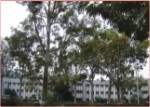 PK: I think the Conference organized by Bangladesh Electronics Society, Rajshahi will play a vital role in the Bangladesh ICT sector. These kind of programs are also appreciated because of increasing ability of students on different angles, to interchange views of students, teachers, professionals, researchers as well as in manpower development. Many departments of RU like Applied Physics and History have organized some international conferences, but ICECC-2008 was the largest by far. PK: I think the Conference organized by Bangladesh Electronics Society, Rajshahi will play a vital role in the Bangladesh ICT sector. These kind of programs are also appreciated because of increasing ability of students on different angles, to interchange views of students, teachers, professionals, researchers as well as in manpower development. Many departments of RU like Applied Physics and History have organized some international conferences, but ICECC-2008 was the largest by far.
SC: How do you want to see RU after five years?
PK: I want to see RU in a better position after five years. I want to see the university free of session jams and residential problems. I would also want to see it more well decorated, well equipped, more internally and externally connected on education and research activities. Most of the departments have recently made changes in their course curriculum. New departments have also been proposed. I hope that these kinds of works will continue and RU will continue to prosper.
Copyright
(R) thedailystar.net 2008 |

